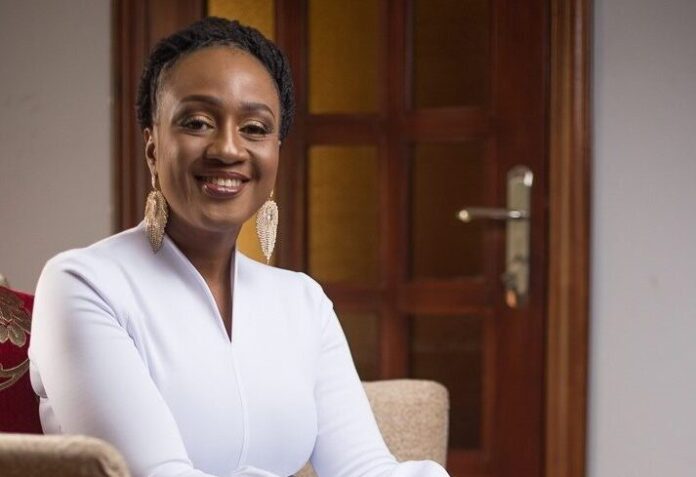One of my favourite things about having the mindset of living life to the fullest is that every new day is an opportunity to retrace our steps and to recreate ourselves. Although we have been programmed to feel stuck with every decision we have made in the past, the concept of being a human being gives us full freedom to continuously evolve. Anytime we are blessed to live in a new day, we have been given the wonderous opportunity to live the future we dreamed. Experts and life success stories support the idea that with a vision in mind, you are more likely to succeed far beyond what you could otherwise achieve without a clear vision. Think of crafting your life vision as mapping a path to your personal and professional dreams. Life satisfaction and personal happiness are within reach. The harsh reality is that if you don’t develop your own vision, you’ll allow other people and circumstances to direct the course of your life.
“Dreams are the touchstones of our characters,” Thoreau, a man who delighted in his imagination, once wrote. Your vision is your most important dream or mental picture. It can also be a set of dreams and long-term goals. A vision defines the optimal desired future state; it tells of what you would like to achieve over a longer time. Vision can be your personal “why” or the organization’s internal purpose of existence. As the Irish playwright George Bernard Shaw said: “Life isn’t about finding yourself. Life is about creating yourself.”
Before I had started my business of coaching, I was heavily invested in the beauty and wellness space. And as a I planned my transition into High-performance coaching, I would always wake up and look forward to a certain date: the date that I had marked down to launch my coaching career. I did not realise that every day leading up to that date was to be spent taking simple actions to create the future I want. Our wildest dreams always feel like a million years away but when we act, no matter how insignificant, we live in the future we dream, even if it’s just little moments throughout the day.
Anyone can dream; dreaming about the future is something I believe we all did even as children. The challenge though as adults is to breakdown our dreams into workable parts such that we can plan each day. Working on a dream future board can help to make the vision plain and clear. Brian Tracy recommends two simple steps to create such a board.
The first step is to envision the future 3-5 years from your now. Go deep into your mind and live deep in that moment. What does a day in your life look like in 3-5 years? Where are you? What are you doing throughout the day? Finding visual representations to tell the story is a powerful tool to use. Inscriptions, quotes, affirmations, and words that make you relive the future repeatedly are things you can write on your board. In summary, any material, concept, or thing that symbolises your future and goals should be on your board. It may be more helpful to look at all the facets of your life as a structural guide. Break them down into the following: relationships, health, self-care, education, career, finances, home, and recreation.
Brian Tracy suggests as a second step to look at the board as often as possible to activate your reticular system. He says to “Notice the resources and opportunities necessary to make your dreams become part of your reality. Doing so will also activate the Law of Attraction!”
Although I have previously stated a 3–5-year period as the future, why don’t we start with 2023 as the future? We are much more attuned to planning on a new year to new year bases. So, as the year 2023 approaches, it may be the perfect opportunity to envision a new future in the short term, while you work on a 3–5-year plan in the long-term.
To take action and begin the exercise, we can start with one of my favourite habits, gaining self-awareness and a deeper understanding of ourselves. We go throughout the day and life happens to us all. We unknowingly evolve from what we know to be true about ourselves. So, it is imperative that we take a moment to reflect on our past and come to a point where we know what we truly want. If we fail to know ourselves and our deepest desires, we will live the visions of others. As you grow, your vision will likely change — partly because you have a better grasp of who you are and what you want and partly because you’ve learned to think for yourself. You’ve decided to stop basing your life on other people’s values and priorities.
The Strategic Coach touches on a challenging part of the journey that most of us are likely to run away from. It is that we must get comfortable with the feeling of losing grip on your identity. At some point, we will have to tell ourselves this: “No matter what I’ve achieved or what capabilities I’ve gained, when I’m ready to make a major jump in my life, I acknowledge what I’ve done and I say to myself, ‘I wonder how much further I can go.’”
When you make the desire for growth a permanent part of who you are, you’ll always be seeking something new, even if you don’t know what the next step is. This allows you to loosen the grip on your identity so you can find new levels of success. Success comes down to how you imagine your future self. To ensure you’re always moving forward, take your cue from people who’ve become experts at reinventing themselves. It’s not your past that should define you, but your future. So, who do you want to be? And where do you want to go?

Now, you know what you want your future to look like, you can start to take the baby steps in the present to get your where you want to be. The most important question to as yourself is this: “what am I doing presently that needs to change in order for me to reach my goal?” Taking up new habits and routines and getting into a new high-performance mindset is what will get you where you want to be in the short-term and long-term. Remember, little actions done daily add up to create the future you want. Nurture a growth mindset. Such a mindset is progressive, in that you can move through challenges by revisiting the vision for your future, being more solution oriented and driving yourself to evolve into the person that can your future self needs. Adaptability is an essential soft skill required of every person. As your life changes you need to adapt your skills and mindsets to address future trends and challenges. This applies in our personal lives and in our lives as leaders, managers and even team players.
Get out there! Keep in mind that building for your future is an intentional act. You need to be conscious and deliberate about your thoughts, utterances, and actions. Be responsive to your needs throughout your journey by levelling up your mindset to be more attentive. Keep the plan in sight by continually revisiting your map to make readjustments. The journey will not be an easy one and that is why you must be patient, focused and proactive on this fresh path. As Socrates rightly said, “The secret of change is to focus all of your energy not on fighting the old, but on building the new.” In your transition, intentionally include a friend or colleague or family member with complementary strengths.
Be encouraged to initiate an intended focus as you make your transition into the coming year. This mindset will be invaluable as you see one chapter of your life come to an end and turn to navigate into new, unchartered waters. Transitioning is a continuous cycle, hence there is the need to pause, ponder, position, prepare and perform every now and then when you have achieved a milestone or hit roadblock.
Are ready to stand out and lead your Image?
Read my book: “The Essentials of Image Leadership”.
Designed with practical exercises for home or office,
This book gives you all the essential tips and
Tools needed to sail with success in your image.
It also touches on dining etiquette,
Ensuring that in every space you find yourself.
You make a personal impact and achieve influence.
She can be reached on [email protected] and
@dzigbordikwaku across all social media platforms.











